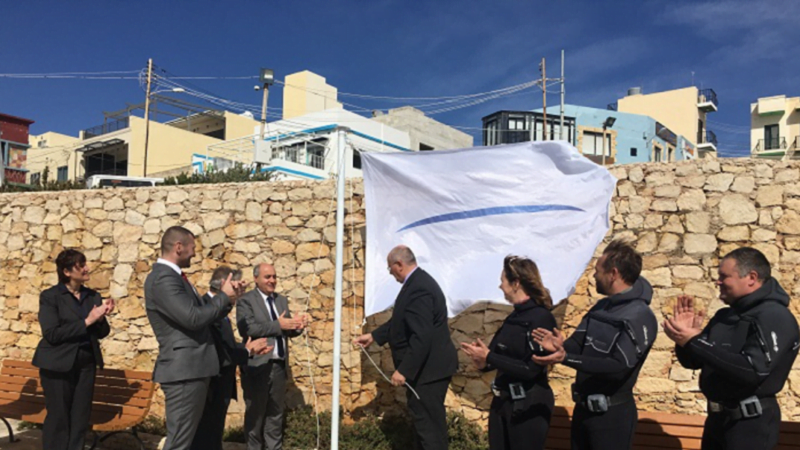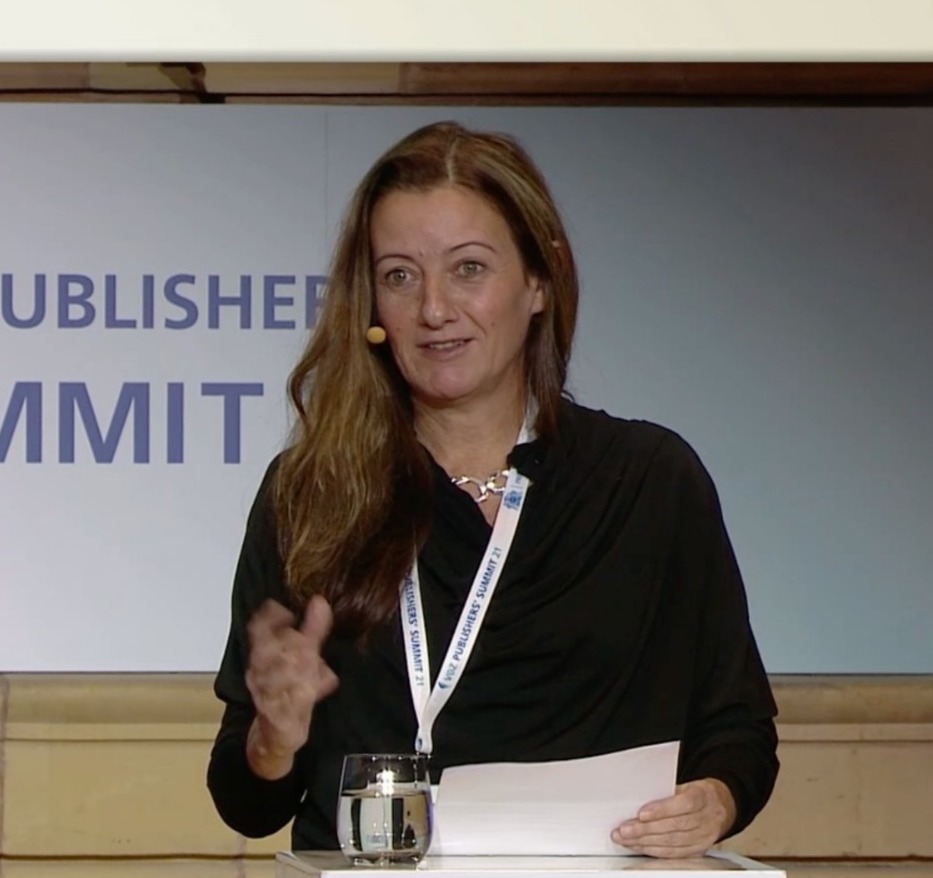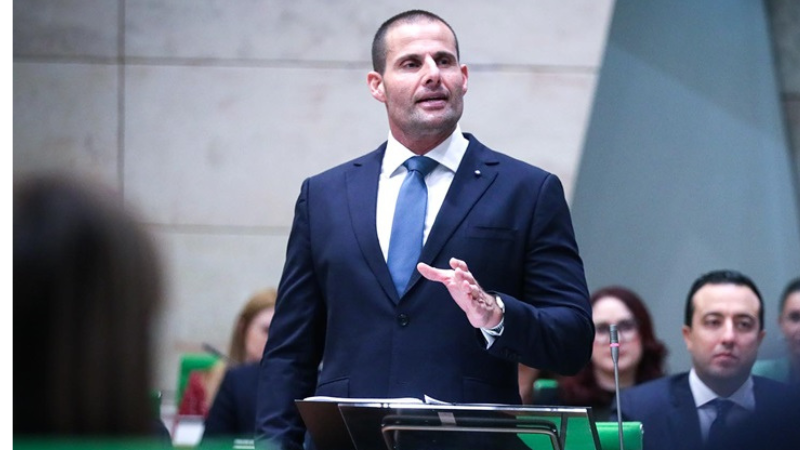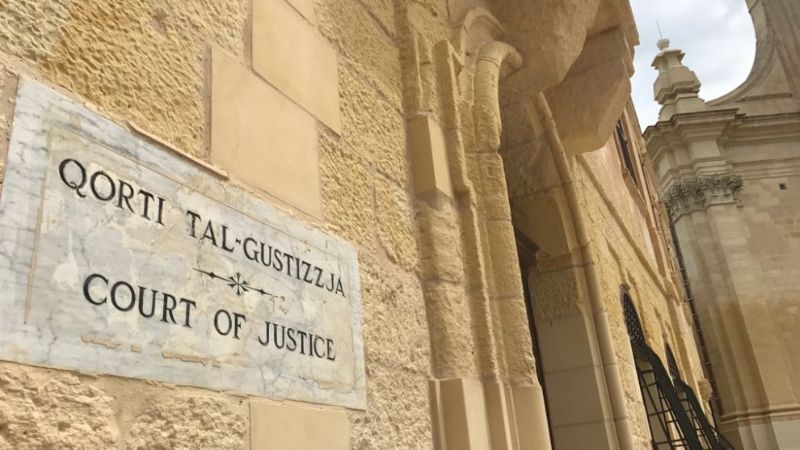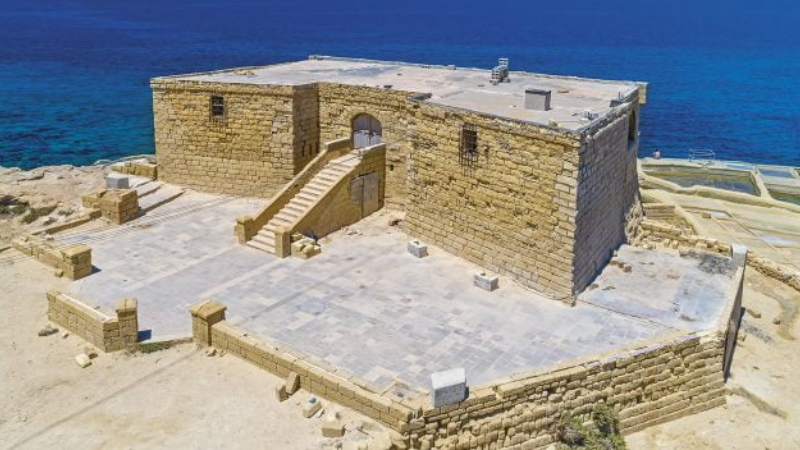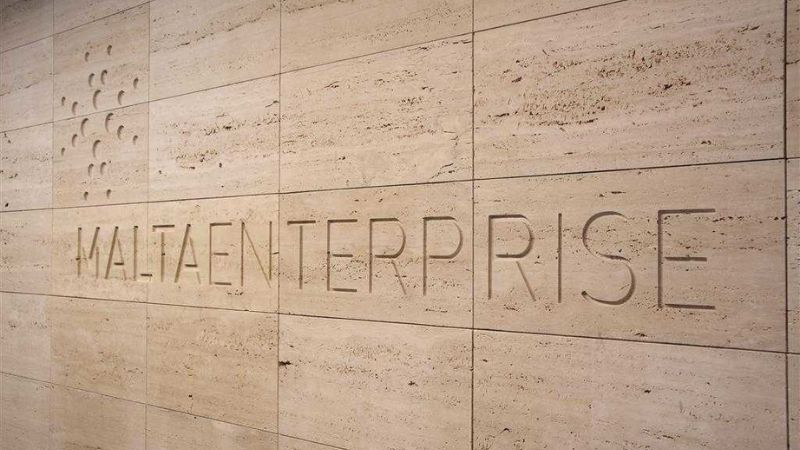While government ministers have been falling over themselves for a photo opportunity to plonk a White Flag on Malta’s beaches – meant to denote a ‘plastic free’ beach – questions have been raised on whether this is an elaborate scam by a few individuals who will rake in millions despite the limited results.
Sources in companies that have sponsored White Flag beaches have told The Shift News that they paid €25,000 to sponsor a White Flag beach. So far, seven beaches in Malta and Gozo have been ‘awarded’ a White Flag.
That amounts to some €175,000 and it is unclear where this money has been spent in terms of environmental protection. Payments go straight into an account in Zagreb, Croatia, while in Malta complaints increase on the lack of maintenance of the White Flag conditions.
Some of these flags were sponsored by Ministries using taxpayers’ money, while others were backed by private sponsorship, mostly from igaming companies.
The conversation with sources is being reproduced below. Their identity is hidden for protection:
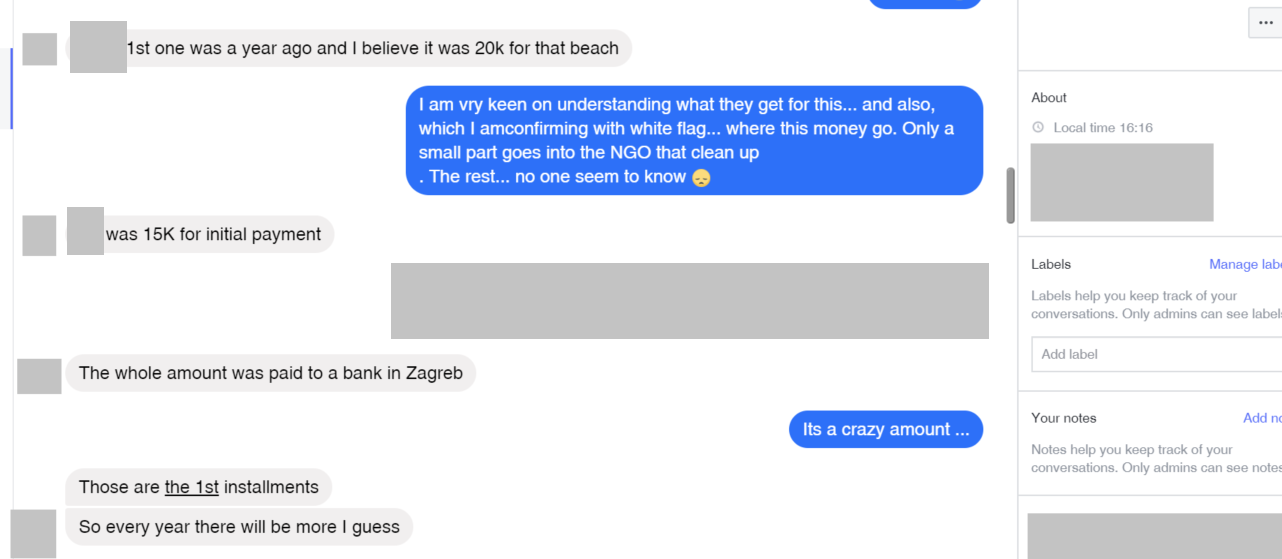
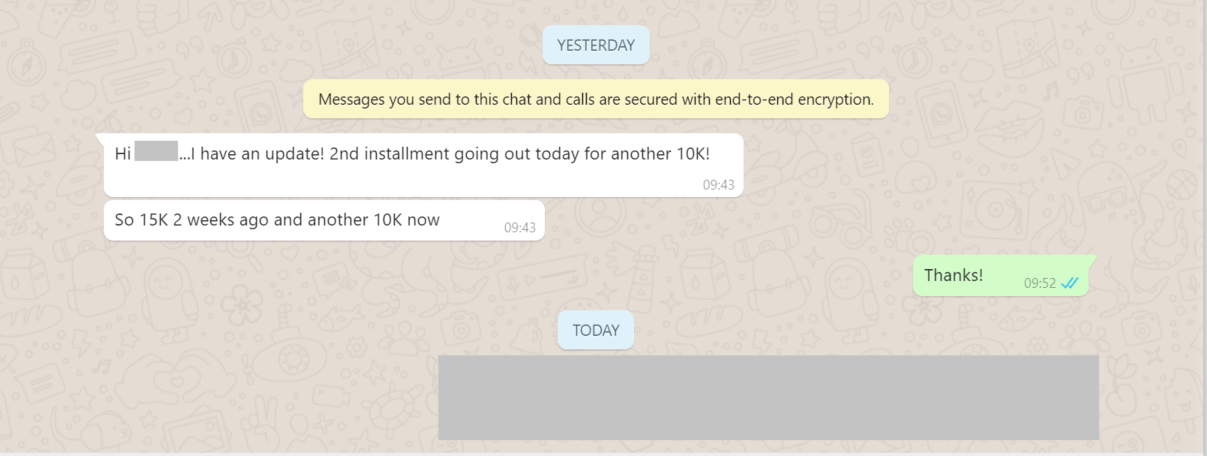
Environment Minister Jose Herrera raised the flag at Wied iz-Zurrieq last March. For that, he was praised as a “pioneer of ocean protection, preservation and cleaning”. This is the Minister whose first statement following his appointment as Environment Minister, said he wanted to build an incinerator on the sea, until he understood the idea was ridiculous.
Herrera’s “pioneer” post on the Facebook page of White Flag International got a handful of likes, but it did not come cheap. Questions sent to the Environment Ministry on the amount spent on the sponsorship of White Flags were not answered at the time of writing.
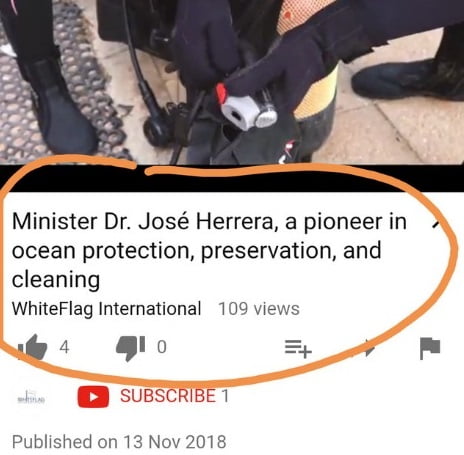
Herrera has been “an ally” of the project from the start. Gozo Minister Justyne Caruana was not to be outdone so she committed to having a White Flag on all of Gozo’s beaches.
The Gozo Ministry has already funded White Flags – Gozo already has three beaches carrying a White Flag at Mgarr ix-Xini, Marsalforn and Daħlet Qorrot. The Shift News has asked the Gozo Ministry what amount was spent but no answer has as yet been given.
Last Tuesday, Health Minister Chris Fearne was handed a White Flag at Gnejna Bay (it was too windy to raise the flag, let alone do a clean-up of the sea bed) to announce the marine environment as ‘plastic free’ even as plastic was being washed onto the beach as a result of the strong winds and rough sea.
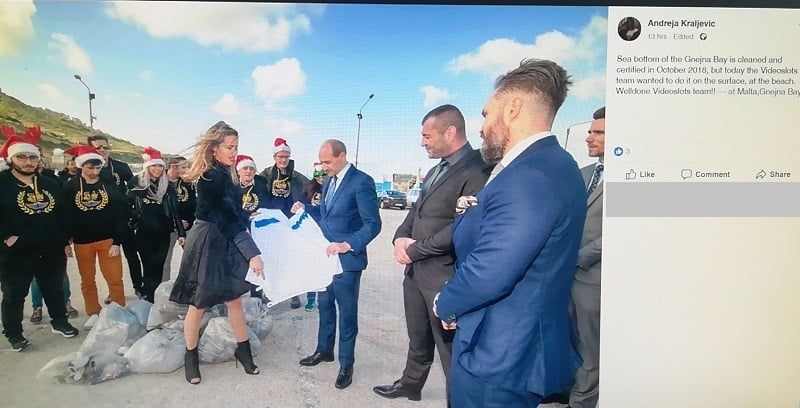
A White Flag is supposed to be proof of the fact that the seabed and marine surface area was cleared of plastics. But this is Gnejna Bay a few hours after everyone left following the ‘award’ of the White Flag to the Health Minister:
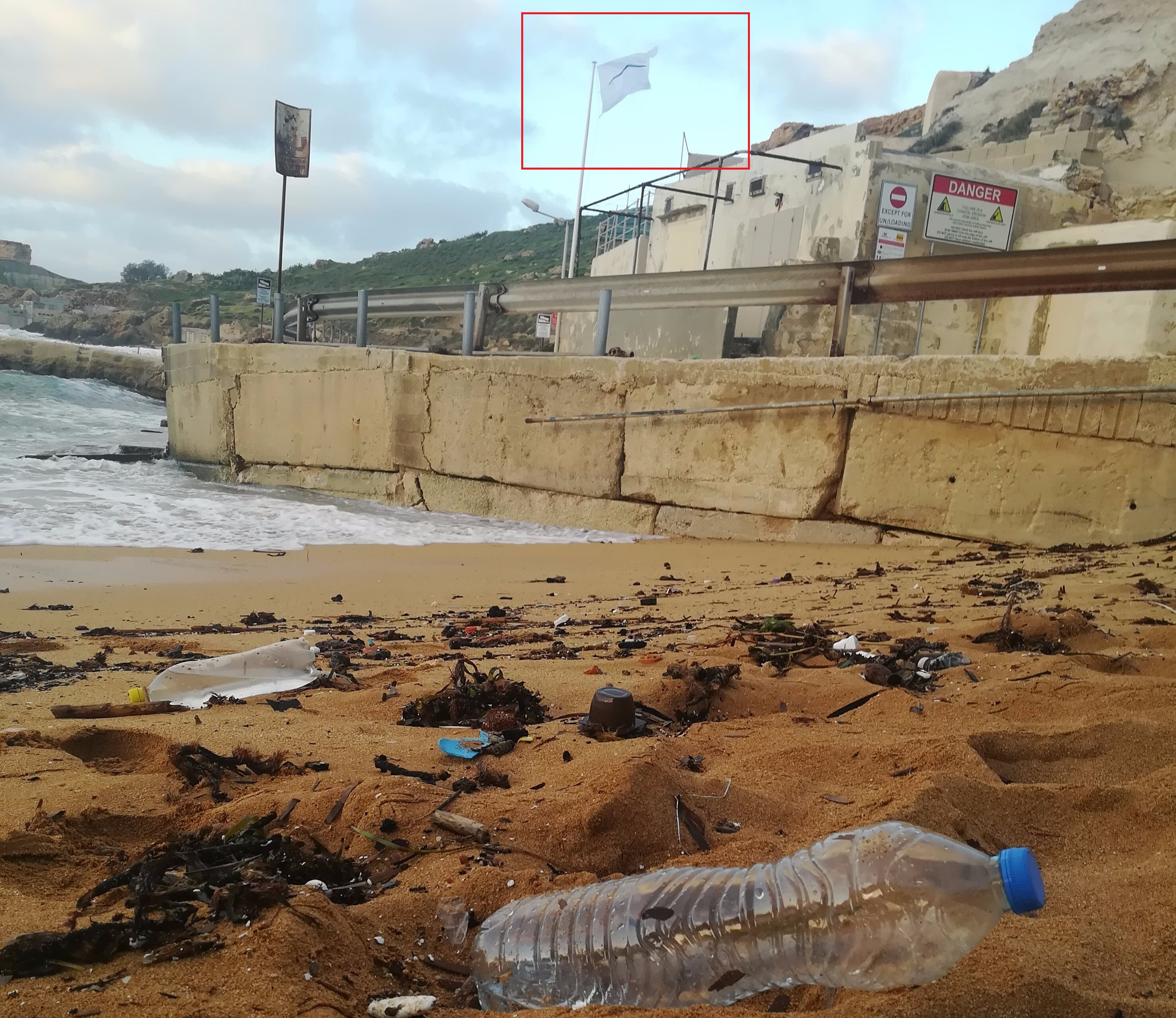
It is not the only beach on which concerns have been raised. The picture below shows Ghajn Tuffieha, declared a White Flag beach, but a few days ago it needed an emergency clean up after plastic spread on the sand after storms last week ridiculed claims of a plastic free beach.
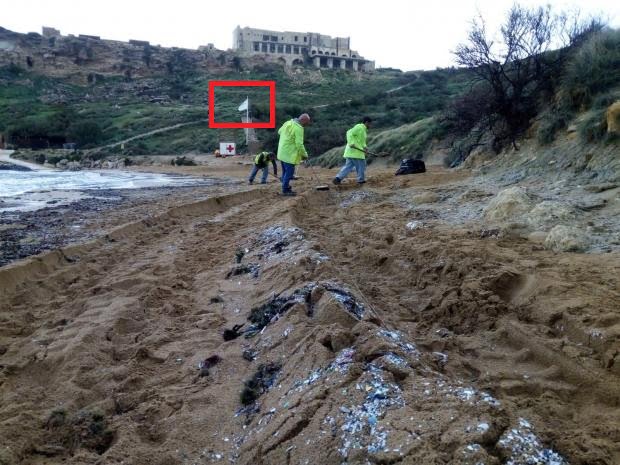
The project’s stated aim is to “use Malta as a showcase for a plastic-free island” covering all of Malta and Gozo’s beaches with White Flags. The Malta Tourism Authority lists 35 beaches in Malta – that would rake in €875,000. But the man behind the project says this is not enough, they will also cover ports and harbours. In Eastern Europe, they even handed White Flag to a cinema, despite the lack of marine environment. Hotels also received flags. The potential is endless.
So what is really being done with this money, and who are the people behind this project?
The team behind the project
Kristijan Curavić – the Croatian man behind the project – looks nothing like an environmentalist, and more like someone out of the cast of a low budget Eastern European version of James Bond. He also has the mandatory blonde in stiletto heels (for a clean-up) to complete the picture – she’s called ‘head of foreign affairs’.
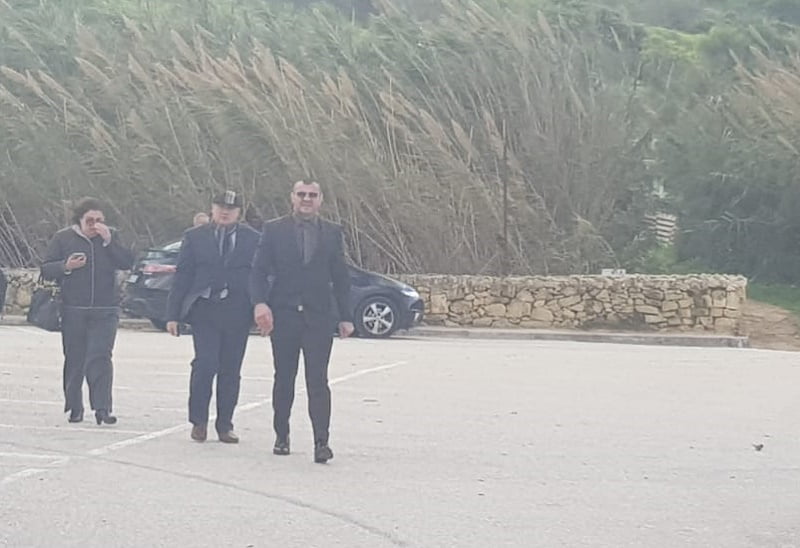
Kristijan Curavić (front) followed by officials from the Health Ministry at Gnejna Bay last Tuesday.
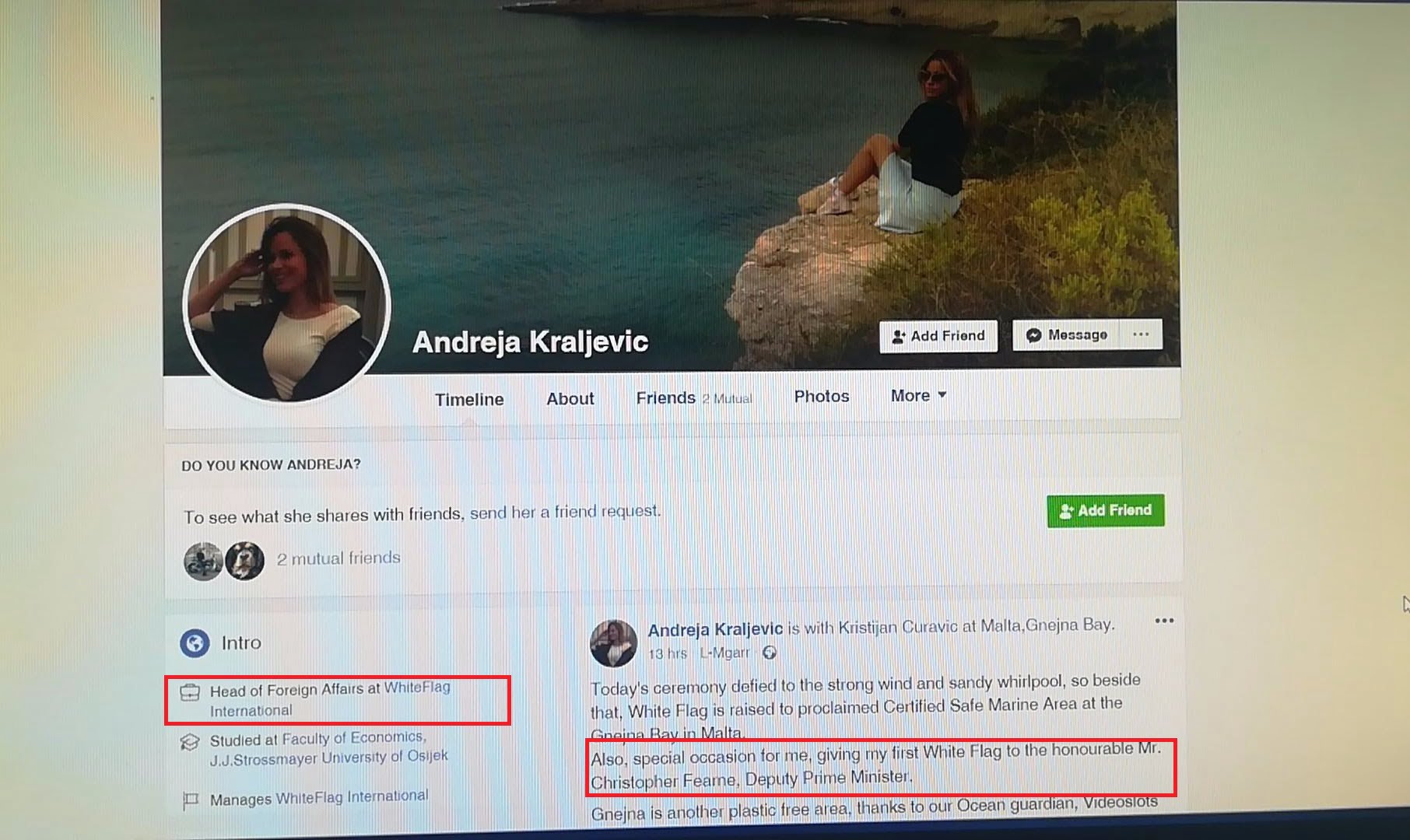
The Head of Foreign Affairs’ post after a clean-up that was no clean-up at Gnejna Bay last Tuesday.
Even if you get past all this and allow the benefit of doubt, it is immediately clear there is a serious lack of knowledge on environmental issues. Every specific question is met with a vague answer. Every probe is shut down with “we will send you information”. But when you send them an email from their website, it takes you to “connecting with Jesus”.


The individuals behind the project are not known to the country’s environmental community, and they have not networked or engaged in any other environmental cause. They seem more comfortable at Hugo’s than Earth Garden.
You don’t need to be a hippy to be an environmentalist, but when you have a clean-up being promoted like a Black Ops team with “counter terrorism divers” there is something seriously wrong – not that the “pioneer” of the environment Jose Herrera noticed.

Curavić set up Ocean Alliance, and several other ‘international’ organisations that support the White Flag project – they all link back to the same group.
In Malta, Curavić teamed up with Steve Abela – the owner of Lord’s gym – hardly a hub of environmentalism. Yet Abela thinks Malta is a hub… for the world’s plastic.
“Just like Malta is geographically at the centre of everything (sic), it is the same for plastic. The world’s plastic…it is all coming towards us, and we need to be prepared,” Abela said, very clearly having no clue of what he was saying.
Abela is the president of White Flag International, while Curavić is the president of Ocean Alliance, which are linked. They gain a lot of promotional capital by photo bombing important international environmental conferences and events.
But a closer look at their web site shows their images on the projects they claim to implement are fake – they use the material from other genuine environmental movements.
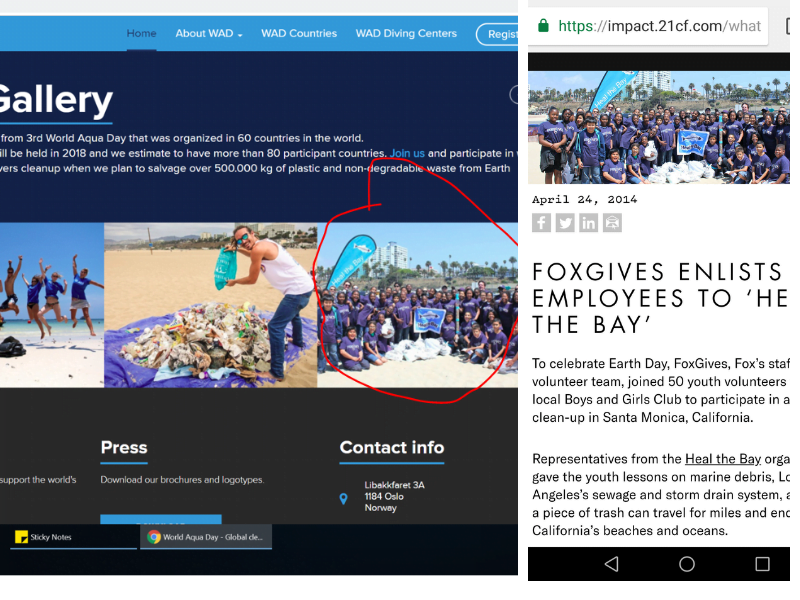
The photo (left) on the White Flag International site is taken from another separate and unconnected event (right).
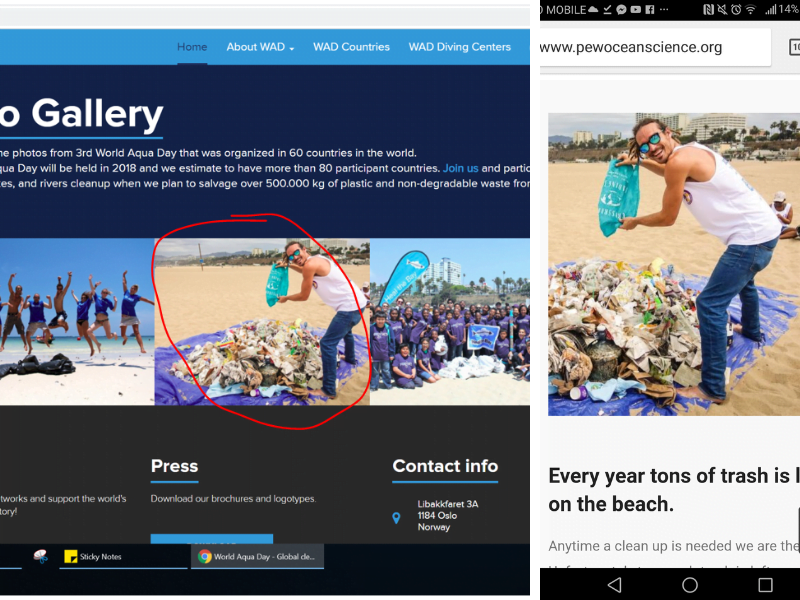
The photo (left) on the White Flag International site is taken from another separate and unconnected event (right).
The list of fake photos on the site is too long to reproduce in this article.
The kind of certification these individuals are handing out to the Maltese government and companies based in Malta would usually come from an authorised body following a rigorous assessment of criteria and monitoring of its implementation.
The Blue Flag, for example, is a world-renowned eco-label trusted by millions around the globe awarded to beaches, marinas, and sustainable boating tourism operators. To qualify for the Blue Flag, a series of stringent environmental, educational, safety, and accessibility criteria must be met and maintained, and assessed by an authorised body.
In the case of the White Flag, these individuals with no real track record in the environmental field are writing the rules, and then they decide who gets the flag and at what price – with no independent assessment or validation that that certificate is worth anything at all.

